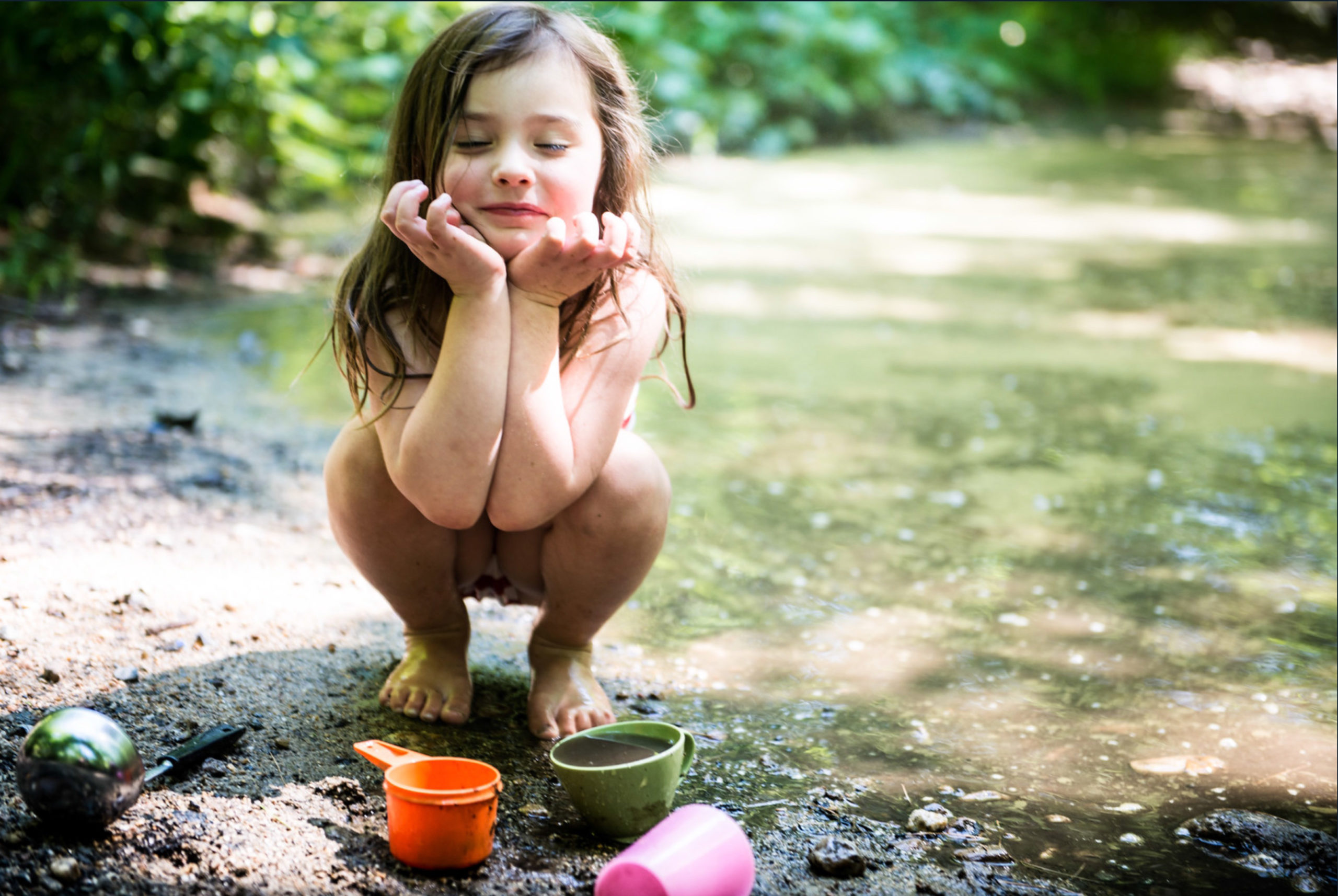
In 2019, I would have said that in an increasingly overscheduled world, play is even more important. Now, just 4 months later and in the midst of a global pandemic, I repeat the same message, and for a similar reason– play brings joy.
The benefits of play are no secret. Children learn about the world and people around them, develop the skills to manage their bodies and emotions, and discover who they are and where they fit into their community.
When our current world seems to be changing by the minute– where presently, schools have taken to distance learning, parents are laid off or working from home while caring for and educating their children, and social gatherings are limited or prohibited due to shelter-in-place orders, play might be the furthest thing on people’s mind. However, in addition to basic health and nutritional needs, play is essential.
In locations where conflict, natural disasters and other upheaval is present, organizations work to establish child-friendly spaces that offer children relief from adult concern, allowing them to play and just be kids. In times of crisis, spaces such as these bring normalcy to an unpredictable world and enable children to build resilience and process the events around them through play. It’s also an opportunity for connection and community building.
But how can we replicate child-friendly spaces in socially distanced situations like a quarantine?
Recognize the need for play and allow for opportunities to play.
Play is recognized as one of the rights of children under the Convention on the Rights of the Child (CRC) of 1989. When children are homebound, caregivers and parents have the unique opportunity to be the sole facilitator of their child’s play. Remember that play is:
- Freely chosen – children choose how, what and with whom they play
- Personally directed – wherever possible, children should be in control of ‘how’ they play
- Intrinsically motivated – playing happens for its own sake and not for an external goal or reward.
- In a secure context – that the child has confidence that any real threat or danger to them has been minimised [example. Avoiding busy roads].
Provide children time, space and open-ended materials.
Children need ample time and space to dive into their imaginations, move their bodies and explore their world. This may look different depending on your location or situation:
Places to Play
- Get out and explore! Look for options near you, such as town or state parks, nature trails, beaches or local green space or reach out to local farmers or others with land. Varied terrain such as rolling hills, beaches, puddles or mud, forests and grassy areas offer a multitude of different options. Small groups of children, or your family unit if you are social distancing, can use the nature around you to inspire play. Explore puddles or streams for critters, build forts with downed branches, create art with stones or leaves. Don’t underestimate empty, overgrown lots too! A handful of items from home and an open space are usually enough to inspire play. If you live in an urban environment, do the best you can by finding ways to explore your neighborhood. Chalking the sidewalk, going on scavenger hunts or playing ball are a few options. There is adventure in every setting.
- If you have a yard/garden or plot of land, use it! Set aside a “yes” space for your children where they can move their bodies freely, explore, create with materials and have the freedom to make it their own (for grown-ups this might mean taking a big breath and letting go of control). Look for ways to create a variety of spaces that address different needs– big body movement (climbing, jumping, running), calm and cozy areas, and creative spaces for open-ended projects. Creating a space doesn’t need to take a lot of time or money. A corner of the yard where your child can dig in the dirt, an open area for running and ball play, and a picnic blanket for quiet play. If you don’t have a large open space, think upward! Hang swings or hammocks from trees or utilize fences to hang shower curtains or old sheets as painting canvas. Obstacle courses with materials already on hand can also be a wonderful option for smaller spaces.
- If you don’t have the option of using an outside space, that’s Okay too! A little creativity goes a long way. You can take many of the options above and modify them for being indoors.
- Find ways to continue experiencing the benefits of nature. Grow a mini indoor garden (micro greens are super easy to grow!), adopt a few indoor plants, set up a bird feeder, or in the very least, find photos of nature to look at.
- Find ways to say “yes” and honor their need to play. Sharing indoor space with small humans can pose some challenges, especially if they produce a lot of what we like to call “play residue” (AKA the tornado path). Setting up a modified “yes” space where your child can be the wonderful, creative little person they are is key. Use things like plastic shower curtains to protect walls, tables or floors when doing art/messy projects. Plastic storage totes make great sensory bins for materials like water beads, sand or play dough, and don’t forget about the bath for foamy bubble fun or even washable wall art. For quiet spaces, blanket forts offer cozy options for kids to have their own world, as does the space between the couch and the wall. There is also this idea for utilizing a bed sheet and a kitchen table. Big body movement can still be done inside as well. Indoor obstacle courses get kids moving in various ways and indoor swings are easy to install with simple hardware. For kids needing to throw or kick, shower poofs are a great alternative to balls.
Materials to Use
If you want the biggest bang for your buck, look for open-ended materials. Open-ended materials (also known as loose parts) usually do not come with directions and can be used in multiple ways. They can be carried, lined up, redesigned, taken apart, moved and put back together in various ways. Using these kinds of materials inspires creativity because of their endless possibilities. There are many beautiful (and expensive) open-ended toys, but we find that the best ones are easily sourced and often free.
Case and point:
Has your child ever been more interested in the box the toy came in rather than the toy itself?
We’ve listed some of our favorite loose parts below. Note: Consideration must be taken when choosing materials for young children so as to avoid possible choking hazards.
- Nature Items: Sticks, pinecones, nuts, rocks, leaves, bark, feathers, tree stumps and tree “cookies”, hay or straw, dirt, sand, mud.
- Recyclables: Cardboard, cardboard boxes, plastic jars, cups, milk/juice cartons, cardboard tubes, buckets, storage containers and their lids.
- Building materials and other scraps: Lumber in various lengths and widths (avoid pressure treated), PVC pipes, pex tubing, rubber hoses, chains, vehicle tires, wooden pallets, tarps and contractor plastic, bricks, floor tiles, metal or rubber washers, nuts and bolts.
- Textiles: Cloth, old sheets, canvas drop-cloth, felt, wool roving (or raw wool if you know a sheep farmer!), carpet samples, yarn, string, rope.
- Art materials: Paper, glue, hot glue, beads, markers, colored pencils, paint, plaster canvas, aluminum foil, clay, tape.
We’re curious what you would add to this loose parts list. Does your child have a favorite unconventional “toy”?
Regardless of your location, availability of space or personal finances, there are many ways to encourage play. During times of uncertainty, flexibility and creative thinking are key to creating child-friendly environments. We can encourage authentic play experiences by allowing children the time, space and materials to create, explore, and move their bodies. Pro tip: If your children need a little extra inspiration, pair loose parts materials with children’s picture books. A few of our favorite books to spark imagination include “Not A Box” and “Not A Stick” by Antoinette Portis, “Beautiful Oops” by Barney Saltzburg, and “Mix It Up” and “I Have An Idea” by Herve’ Tullet.
During a time where many of us feel distanced from each other, play can be the thing that keeps us connected. The benefits of play extend beyond just childhood, and finding ways for you to play or be playful throughout the day is a powerful way to combat dreary news reports and grey days. Joy often comes from the simple things, play being one of them.
If you have a chance, we would love to hear from YOU!
What are ways you are getting outside or encouraging play with your family? We would love to support families through these tricky times, so please let us know if there are any topics you are interested in learning more about.
Be well and play on.
